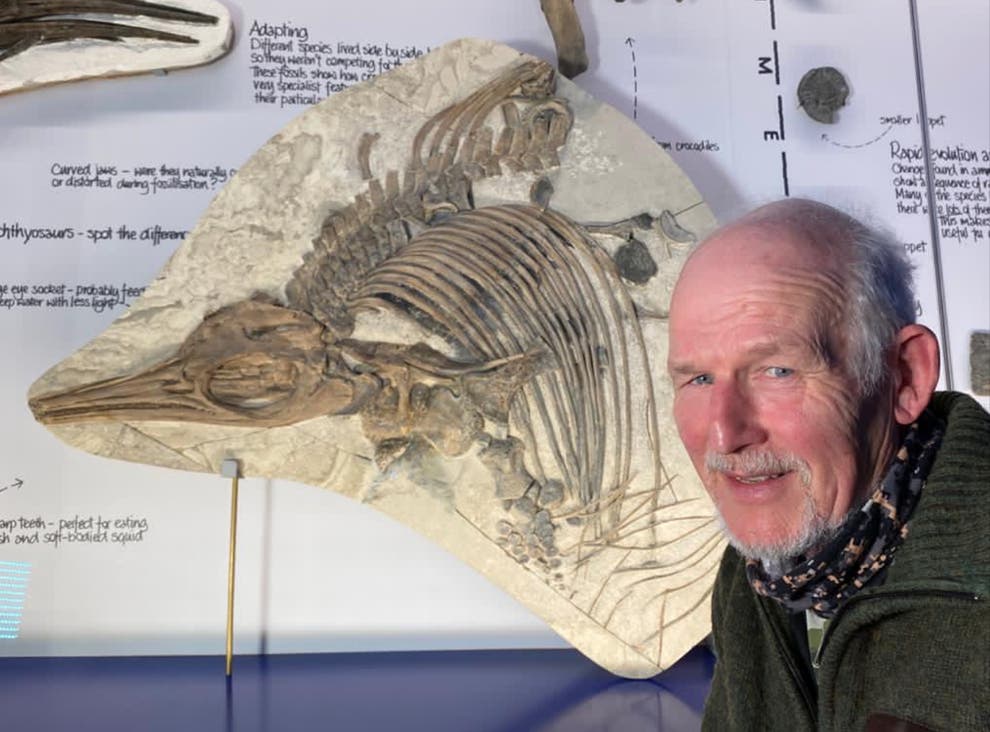Today, we’re diving into an extraordinary hearing about NASA’s efforts to protect Earth from cosmic threats. This mission aims to enhance NASA’s ability to detect and characterize Near-Earth Objects (NEOs) by determining their sizes and orbits. I have here three meteorites from UCLA’s world-class meteorite collection, showcasing the tangible reality of these celestial visitors. After months of speculation and secrecy, Congress has revealed evidence of an object called 3I Atlas, previously hidden from the public. What they’ve shared is strange, unsettling, and raises more questions than it answers. If this is what they’re showing us now, what might they still be concealing?
A Cosmic Intruder
As you read this, something remarkable is hurtling through our solar system at 134,000 miles per hour. This object, 3I Atlas, doesn’t belong here—it’s an outsider to our cosmic neighborhood, defying the laws of physics as we know them. First detected in July 2025 as a faint blip on astronomers’ screens, it quickly became clear this was no ordinary space rock. Within weeks, scientists realized 3I Atlas was challenging everything they thought they understood about the cosmos.
Geophysicist Stefan Burns, who has been tracking this mysterious visitor, observed behaviors that defy explanation. 3I Atlas began showing activity near Jupiter’s orbit, far earlier than any typical comet would activate. As it approached the sun, it developed a massive coma of gas and dust, stretching to half the size of the sun itself. But the real anomaly came between September 7 and 15, when 3I Atlas suddenly surged in brightness, defying all predictive models. This leap coincided precisely with the object crossing within two astronomical units of the sun, as if it had been waiting for the perfect moment to reveal its true nature.
Major telescopes like Hubble and James Webb have been unable to capture clear images since August, leaving amateur astronomers with high-quality equipment as our primary observers. Currently at magnitude 12, 3I Atlas is too faint for the naked eye but bright enough for dedicated observers to track. What they’re seeing is keeping scientists up at night, wondering if this could be humanity’s first encounter with extraterrestrial technology—an object that shouldn’t exist.
Harvard Astrophysicist’s Bold Hypothesis
Avi Loeb, a renowned Harvard astrophysicist known for studying extreme cosmic phenomena, has turned his attention to 3I Atlas. This isn’t a fringe scientist making wild claims—Loeb is a leading voice in astrophysics, and he’s seriously considering the possibility that 3I Atlas could be alien technology. He’s identified five distinct characteristics that suggest an artificial origin, based on measurable anomalies that don’t align with any known natural space objects.
- Orbital Alignment: 3I Atlas follows a path just 5° off the ecliptic plane, where our planets orbit. For a random interstellar object, this alignment is statistically improbable—less than a 1% chance for a retrograde object to align so closely with our planetary plane.
- Unprecedented Size: Recent estimates suggest 3I Atlas could be up to 46 kilometers in diameter, the size of a small city. Maintaining structural integrity across such a vast scale during a billion-year interstellar journey is extraordinarily unlikely for a natural object.
- Anti-Tail Anomaly: Unlike every known comet, which forms a tail pointing away from the sun, 3I Atlas has a cigar-shaped “anti-tail” directed toward the sun. This defies the basic physics of solar wind and radiation pressure.
- Unusual Chemistry: Spectroscopic analysis reveals nickel around 3I Atlas but surprisingly little iron, a ratio that doesn’t match natural space rocks. This composition resembles industrially produced nickel alloys used in human technology.
- Strange Light Reflection: 3I Atlas exhibits extreme negative polarization and a low inversion angle, optical properties that don’t match any known natural materials in space. These characteristics suggest something fundamentally different about how it interacts with light.
The Green Glow of Transformation
Amateur astronomers in Namibia have captured stunning images of 3I Atlas, revealing a haunting green glow that sets it apart against the void of space. This glow, caused by the molecule C2 (two carbon atoms bonded together), appears when solar radiation excites the molecule, emitting green light. Early data showed no significant C2 presence, indicating that new chemical processes are occurring as 3I Atlas heats up near the sun. These materials, frozen during its interstellar journey, are now vaporizing, creating molecular combinations not previously detected.
This green glow isn’t just visually striking—it’s chemically significant. The specific chemical emissions, combined with the object’s other anomalies, don’t match any known natural processes. Typically, carbon-rich compounds under solar radiation produce predictable molecular mixtures, but 3I Atlas is generating combinations that defy standard models. Most disturbingly, these chemical changes appear controlled, maintaining consistent intensity and patterns, as if the object is actively managing its reactions rather than passively responding to solar heating.
The Impossible Anti-Tail
The most striking feature of 3I Atlas is its anti-tail, a structured formation extending toward the sun in a precise, cigar-shaped pattern—ten times longer than it is wide. This violates a fundamental principle of celestial mechanics: comets always form tails pointing away from the sun due to solar wind and radiation pressure. Images from Namibia show this anti-tail as an organized, geometric structure, not a chaotic result of random processes. No known natural force could produce a stream of matter flowing toward a star, but artificial mechanisms—like electromagnetic propulsion, internal energy sources, or solar sail technology—could explain this phenomenon.
Race Against Time
Time is running out to study 3I Atlas. On October 21, 2025, it will reach superior conjunction, aligning with the sun and Earth, rendering observations impossible due to solar glare. This narrowing window has created urgency among astronomers. Major observatories are struggling with interference, and space telescopes like Hubble and James Webb have been ineffective since August. Amateur observers with advanced equipment are now humanity’s best hope for tracking 3I Atlas.
The object’s extreme velocity means changes that would take months in a typical comet are occurring in days or weeks. Missing even a few days of observation could mean losing critical data. Current solar maximum conditions, with frequent flares and coronal mass ejections, add complexity, potentially influencing 3I Atlas’s behavior. As it approaches perihelion on October 31, its closest point to the sun, the intense heating will occur largely out of view, deepening the mystery.
The Mars Gambit
October 3, 2025, offers a critical opportunity to unravel 3I Atlas’s secrets. On that date, it will pass within 29 million kilometers of Mars, close enough for detailed observation by spacecraft like the Mars Reconnaissance Orbiter, Mars Express, and India’s Mars Orbiter. These instruments, capable of imaging features as small as a desk or conducting detailed spectroscopic analysis, represent humanity’s best tools for studying this object.
This coordinated campaign requires precise timing across vast distances, with radio signals taking 12 to 24 minutes to travel between Earth and Mars. If high-resolution images reveal a small nucleus shedding mass like a comet, a natural explanation might hold despite the anomalies. But if 3I Atlas shows artificial electromagnetic signals, geometric features, or structural integrity unlike natural comets, the technological hypothesis would gain significant support.
A Planned Trajectory?
3I Atlas’s orbit resembles a carefully planned reconnaissance mission. Its retrograde path brings it close to multiple planets, maximizing observation opportunities. The statistical improbability of this alignment—within 5° of the ecliptic plane while encountering Mars and Jupiter—is staggering. Loeb suggests this trajectory mirrors what an artificial probe might follow to survey our solar system efficiently. The timing is equally precise: arriving just months earlier or later would have missed these close encounters.
Loeb’s calculations indicate that a velocity change of just 30–40 km/s in October could bring 3I Atlas—or parts of it—to Earth between December 26, 2025, and January 9, 2026. Such a maneuver, achievable with current human technology, would be trivial for an advanced civilization. Any deviation from its predicted path would provide undeniable evidence of artificial propulsion.
A City-Sized Enigma
At up to 46 kilometers in diameter, 3I Atlas is unlike anything humanity has built. Natural objects of this size typically erode or fragment during interstellar travel, yet 3I Atlas maintains structural integrity. Its size aligns with theoretical megastructures like interstellar exploration vessels or Von Neumann probes. This scale could house complex systems for propulsion, navigation, or communication, explaining the anti-tail, precise orbit, and chemical anomalies. If artificial, 3I Atlas represents engineering far beyond human capabilities.
Chemical Clues to Technology
The chemical composition of 3I Atlas further defies natural explanations. Its nickel-heavy, iron-poor makeup mirrors industrial alloys, not the mixed compositions of natural space rocks. The sudden appearance of C2 molecules suggests controlled chemical processes, not passive heating. These signatures, combined with the object’s other anomalies, point to advanced manufacturing rather than geological origins.
A Looming Deadline
As 3I Atlas races toward its October 31 perihelion, humanity faces a critical deadline to answer one of the most profound questions in history: Is this our first encounter with alien technology? Share your thoughts below.






















